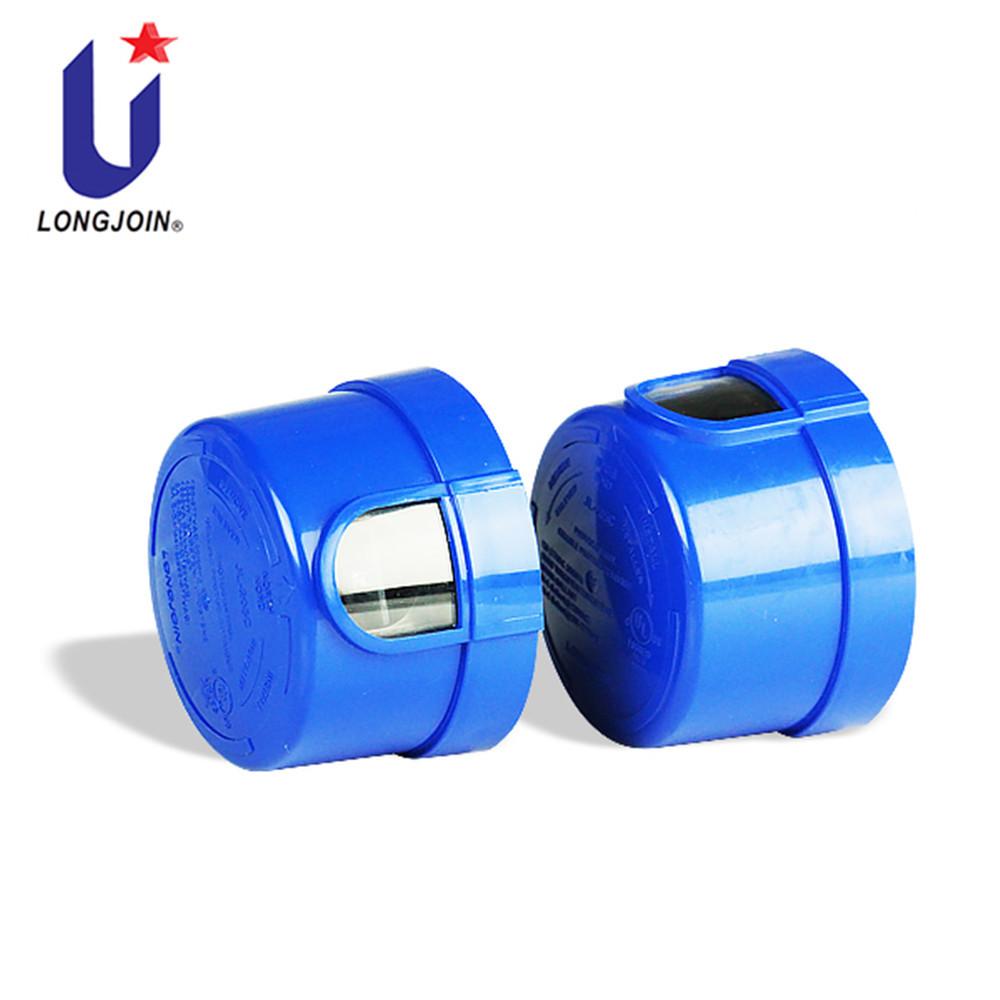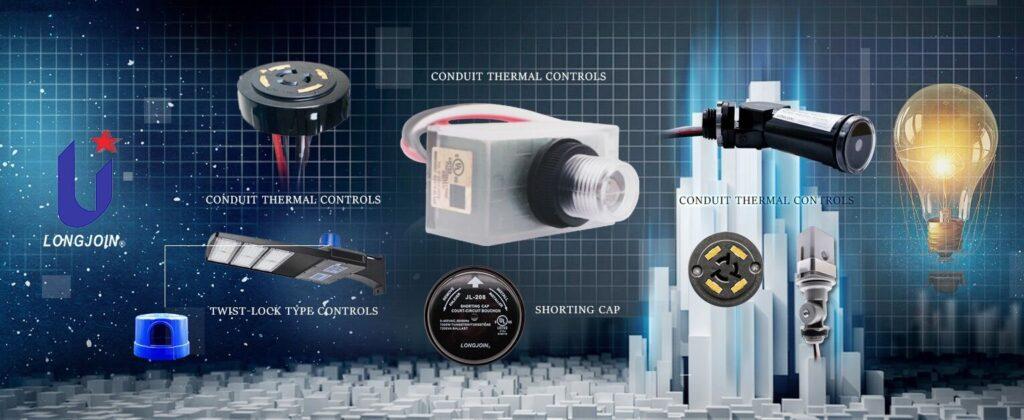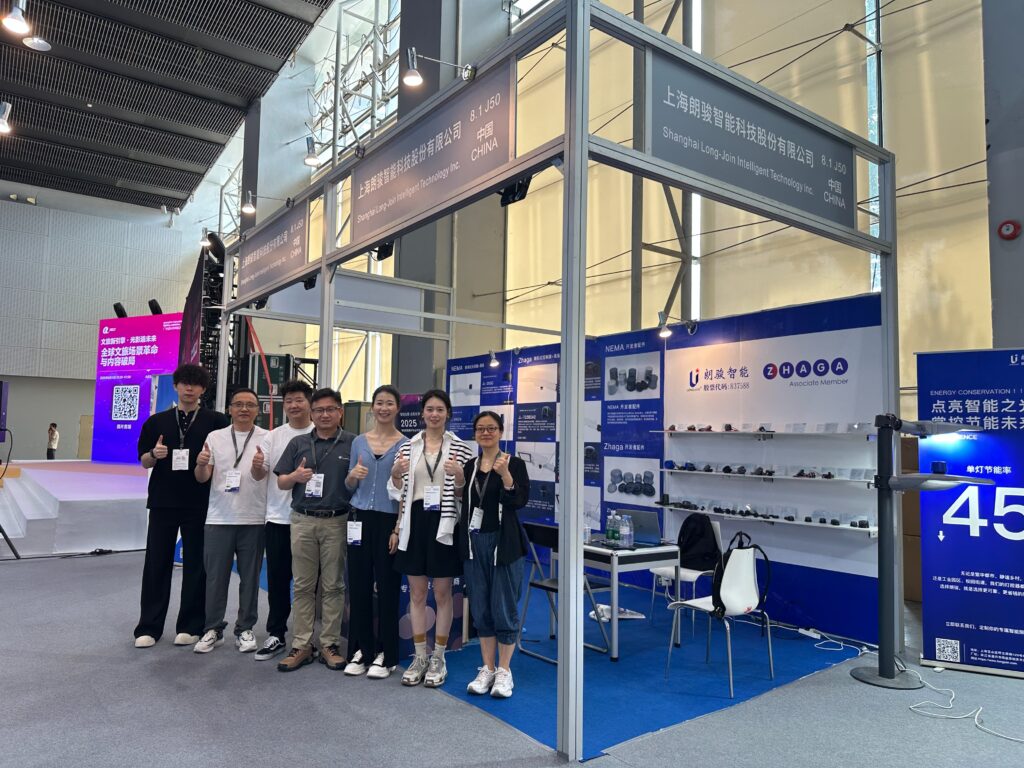مخطط تفصيلي
- مقدمة
- What Is Reverse Proportional Illuminance and How Does the JL‑206 وعاء التحكم الضوئي Use It?
- How Does the JL‑206 Improve Safety in Tunnel Lighting?
- Why Is the JL‑206 مستشعر ضوئي Ideal for Parking Garage Transition Zones?
- How Does the JL‑206 Benefit Light-Sensitive Warehouse Areas?
- What Role Does the JL‑206 Play in Enhancing Stage and Display Lighting?
- الكلمات النهائية

Why would a مستشعر الضوء turn lights on when it’s brighter and off when it’s darker? That’s exactly what the JL-206 does. Unlike traditional أجهزة استشعار الضوء, it follows a reverse proportional illuminance pattern. This design unlocks specialized benefits in environments where lighting consistency is critical. From tunnels to parking garages and display setups, the JL-206 brings precision and safety where ordinary sensors fall short.
What Is Reverse Proportional Illuminance and How Does the JL‑206 وعاء التحكم الضوئي Use It?
Reverse proportional illuminance is a unique sensing method. In this mode, the مستشعر الخلية الضوئية switches the lights on at higher light levels. It turns them off at lower light levels. This is the opposite of how standard photocells work.
The approach offers a wider sensing range. It also improves control in changing light conditions. The LongJoin JL-206 مستشعر تبديل الصورة uses this method for better accuracy. But before we discuss this in detail, here are its operational thresholds:
- Turn-on threshold: 24 lux — lights activate at relatively bright levels, preventing tunnels or garages from going too dark too quickly.
- Turn-off threshold: 16 lux — lights stay on longer into dawn, enhancing stability.
- هذا 8 lux hysteresis gap reduces rapid on-off cycling (“chatter”) caused by minor lighting shifts.
Here is the table outlining other technical details of JL-206.
| ميزة | تفاصيل |
| الجهد المقدر | 120 – 277 VAC or 120 – 347 VAC |
| نوع المستشعر | CdS photocell, IR‑filtered phototransistor, or unfiltered phototransistor |
| MOV Surge Arrester | 110 J/3500 A, 235 J/5000 A, or 460 J/10000 A |
| Life Cycle | ≥ 3650 switching cycles |
| الشهادات | يو ال773, المعهد الوطني للمعايير الأمريكية C136.10–2010 listings |
| Socket Standard | ANSI C136.10 twist-lock for standard fixtures |
كيف يعمل؟
The JL-206 uses an IR-filtered phototransistor coupled with a microprocessor. It continuously samples ambient light and compares it to preset thresholds. A built-in 5–20 second delay avoids false triggering from momentary changes, like vehicle headlights or lightning. This has many technical advantages that include:
- Designed with ANSI C136.10 twist-lock, suitable for street and area lighting fixtures.
- Includes surge arrester (MOV), UV-stable housing, and fail-on/fail-off operation modes.
- Rated for over 10,000 switching cycles, with IP65 protection for outdoor use.
Contrast with Standard عناصر التحكم في الإضاءة
معيار أجهزة الاستشعار الكهروضوئية typically use a single threshold (~10–15 lux) to turn lights on at dusk and off at dawn. They lack a reverse pattern and hysteresis control. This results in abrupt lighting changes or constant toggling during dawn/dusk cycles.
JL-206’s design ensures earlier activation, delayed deactivation, and steady performance, especially in environments with shifting illumination.
How Does the JL‑206 Improve Safety in Tunnel Lighting?

The Problem: “Black Hole” and “White Hole” Effects
When drivers enter a tunnel from bright daylight, a sudden drop in visibility creates a “black hole effect.” On exit, a rapid increase in brightness causes a “white hole effect.” Both situations impair driver reaction and heighten accident risk.
Typical مفاتيح الإضاءة الضوئية activate at around 10–15 lux as it gets dark and shut off at dawn. They do not compensate for the bright-to-dark and dark-to-bright shifts at tunnel portals. Here is a table showing lighting requirements for tunnel zones based on IES/EN standards.
| Tunnel Zone | Recommended Illuminance (lx) | غاية |
| Threshold Zone (Entry) | 300–500 | Match the outside brightness to avoid glare |
| Transition Zone | 100–300 | Gradual adjustment to tunnel lighting |
| Interior Zone | 10–50 | Maintain visibility for navigation |
| Exit Zone | 50–100 | Prepare eyes for daylight re-adaptation |
JL‑206’s Smart Pre‑Light Activation
The JL‑206 turns lights on at 24 lux, maintaining illumination before drivers enter darkness. It switches off at 16 lux, keeping lights longer into daylight, preventing abrupt transitions.
Furthermore, the JL‑206’s inverse/proportional illuminance and built-in 5–20 second delay filter out false triggers, such as approaching vehicles or lightning. Its surge arrester (MOV), ANSI C136.10 twist-lock design, IR-filtered phototransistor, and UV-stable housing make it suitable for tunnel environments.
Real‑World Integration
- Commonly installed in expressway tunnels, underpasses, and mountain pass portals.
- Compatible with centralized lighting control for real-time monitoring and alerts.
- Built to endure harsh tunnel conditions, including moisture and temperature swings.
Reddit Backing
According to electricians on Reddit:
“They are typically used for tunnel lighting where you need brighter lighting in the daytime to offer less contrast to drivers entering and exiting the tunnel.”
Why Is the JL‑206 مستشعر ضوئي Ideal for Parking Garage Transition Zones?
Drivers moving between bright outdoor light and dim underground spaces face abrupt brightness changes. This can cause momentary blindness and disorientation. Illuminance shifts here are dramatic, requiring precise lighting control.
Why Uniformity Matters
ال IES recommends even light distribution of 1 to 5 fc or 10 to 50 lumens/ft² near entrances and exits. Poor transitions can increase pedestrian accidents and reduce driver confidence.
JL‑206 The Ultimate Solution
By turning on at 24 lux before entry and off at 16 lux after exit, it smooths visual adaptation.
No sudden glare or darkness when crossing thresholds. The 8 lux hysteresis ensures slow, steady adjustments. Here is how it benefits:
- It maintains adequate illuminance without over-lighting
- This aligns with IES guidelines and reduces energy waste.
- It prevents rapid cycling during intermittent daylight or artificial light changes.
Real-World Implementation
- Deployed in multi-level garages linking ramps to main streets.
- Often paired with LED fixtures (4000–5000 K) for consistent color temperature.
- Supports safety standards and enhances security perceptions.
How Does the JL‑206 Benefit Light-Sensitive Warehouse Areas?

Warehouses storing materials like pharmaceuticals and fresh produce need strict light control. Excess lighting can degrade products. Insufficient lighting hampers safe operations. Here is a table offering insights about various light-sensitive products in warehouses and their tolerance levels.
| Product Category | حساسية الضوء | Safe Illuminance Range (lx) |
| Pharmaceuticals | High (UV/Heat damage) | ≤ 50 lux, preferably controlled |
| Fresh Produce | Moderate to High | 30–70 lux, limited exposure time |
| Electronic Components | High (static/photo damage) | ≤ 100 lux, non-direct lighting |
| Artwork/Archival Storage | Extremely High | < 50 lux, with UV filtering required |
The JL‑206 light sensor photocell switch balances safety and preservation. Its reverse proportional design turns lights on at 24 lux, ensuring sufficient visibility. It turns off at 16 lux, reducing exposure to sensitive goods. This creates a controlled lighting environment—not too bright, not too dim. Further, here is why it’s best for industrial use:
- IP65 rating protects against dust and moisture.
- ANSI C136.10 twist-lock fits standard warehouse lighting.
- Built-in surge arrester (MOV) guards against power spikes.
- A 5–20 second time-delay filters out transient light changes (e.g., forklifts, doors), preventing flicker.
- Follows IES-recommended illuminance (10–50 lx) in storage aisles and transition zones.
What Role Does the JL‑206 Play in Enhancing Stage and Display Lighting?
Modern stagecraft uses shifting light levels to evoke emotion and tell stories. Reverse proportional illuminance enables impactful transitions by triggering light changes at specific ambient levels—an essential tool for drama and ambience.
The 24 lux “turn-on” makes background lighting pop when subtle stage cues begin. The 16 lux “turn-off” holds spotlight intensity a bit longer, preventing premature dimming and smoothing scene transitions.
Technical Traits for Theatrical Use
The JL‑206 tolerates rapid light changes without flicker, thanks to its 5–20 s delay and hysteresis gap. Its ANSI C136.10 twist-lock form factor fits standard theatrical and display fixtures. Surge protection and UV-resistant housing help in backstage or outdoor display zones.
Real-World Applications
- Concerts and theatrical performances use it to keep the stage ambience stable between blackouts and cues.
- Museum exhibits and showrooms apply it to preserve visual contrast and object clarity.
- Trade fairs utilize JL‑206 to maintain visual integrity amidst fluctuating ambient conditions.
الكلمات النهائية
The JL-206 stands out for its reverse proportional illuminance, enabling smarter lighting control in complex environments. From tunnels to display zones, its performance ensures both safety and efficiency. For dependable access to original LongJoin JL-206 photocells, تشي-سوير offers a trusted supply backed by industry experience.
الروابط الخارجية
- https://en.wikipedia.org/wiki/Lux
- https://www.ul.com/solutions
- https://www.ansi.org/
- https://www.researchgate.net/figure/shows-the-black-hole-effect-and-the-white-hole-effect-found-when-approaching-and-exiting_fig2_344097650
- https://www.reddit.com/r/electricians/comments/ot3n6g/reverse_photocell/
- https://www.ies.org/standards/






